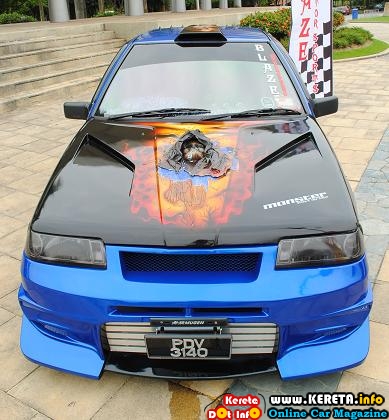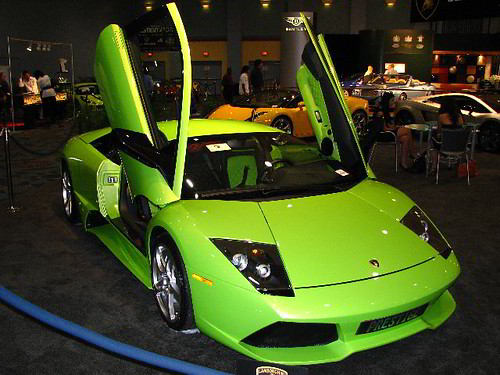|
|
|---|
Saturday, August 8, 2009
Lithium and REE: Obama Admin Issues 'Down Payment' on Electric Cars, Batteries TNR.v, CZX.v, FMC, ROC, SQM, F, DAI, NSANY, TM, TTM, BYD, GOOG, HUI,
Posted by andre at 10:58 AMWe had almost all components in our Next Big Thing to make it Big fast before: big market potential, big names, now we have the last component - Big money. Juniors involved in Lithium Supply chain are finding money easily as well than market would make you think. All these are very encouraging signs for our newly pronounced Bull.
"When Mr Secretary is investing in Electric cars we can be more assured that the Green Mobility Revolution is serious and will not be killed by Oil lobby. Place is getting crowded with names from Warren Buffet to John Doerr and now Henry Paulson adds a few bucks. With Goldman Sachs turned bullish on commodities all these moves is like an open trading book with bet on falling US Dollar and rising demand in commodity space. You can never be sure in anything, but it is a nice twist to our Next Big Thing story."
"August 6, 2009
By SAQIB RAHIM AND JESSICA LEBER of ClimateWire
A $2.4 billion grant program has renewed hope that a U.S. industry in electric cars and the batteries to propel them won't be hopelessly stuck behind foreign competitors.
The grants (pdf), whose recipients were announced yesterday, were billed as the largest auto-battery investment ever. The funds will be split among 48 projects throughout the supply chain, from developing batteries to building manufacturing plants to demonstrating actual vehicles.
Observers hailed the grants as a "down payment" for an industry that, in truth, isn't too far behind its overseas rivals and that could make a profound reduction in U.S. greenhouse gas emissions.
"We're at the beginning of a very large opportunity," said Brian Wynne, president of the Electric Drive Transportation Association. "There's a choke point here. The choke point is the availability of automotive-grade batteries. That choke point is worldwide. That's not a U.S. phenomenon."
Currently, the U.S. industry sources many of its parts from abroad. Energy Secretary Steven Chu, announcing one grant in North Carolina, said Japan produces 99 percent of the batteries for the hybrid cars on U.S. roads.
American automakers want more domestic production of these batteries, since that would allow them to cut costs. But battery makers have said they can't scale up production without a solid supply chain -- building not just batteries, but also the motors, wiring and other parts that make an electric car work, in the United States.
Attacking a scale-up problem
The federal grants will aim to crack that impasse: While companies will receive federal funding, most will have to match the grant with their own spending, dime for dime.
Mark Duvall, director of electric transportation for the Electric Power Research Institute, a utility-funded think tank, said the funding will drive projects pushed to the sidelines by the recession.
"In this economy, to come up with that type of cost-matching for other investments would be almost impossible," he said. EPRI's project wouldn't have likely taken place without the funding, he said.
EPRI will join the South Coast Air Quality Management District in Southern California to develop 350 plug-in hybrid trucks. By the time all the trucks are built, Duvall said, they should know enough to have them ready for commercial sale.
There are potentially bigger effects in store. Major battery producers Johnson Controls Inc. and A123 Systems Inc. will channel their grants -- $300 million and $250 million -- into parts for hybrid and electric cars. Both companies are leading the American efforts to develop a lithium-ion battery, the technology currently considered to have the qualities needed to produce a car at large scale.
The auto industry is counting on batteries to keep it afloat, but the industry itself won't be at center stage. The Big Three automakers received about $400 million in projects. The grants may seem large, but so is the potential, as the U.S. car industry is the largest consumer market in the world.
GM gets help for the Volt
General Motors Corp. led the pack with $241 million, but it may end up benefiting more from the wider grant package, since it focuses on lithium-ion batteries. That's the technology GM wants to use in the Chevy Volt, an iconic plug-in hybrid car it hopes to release next year.
As Detroit struggles to produce electric-drive cars, another American industry is hauling ahead of the competition. According to Bill Van Amburg, senior vice president at Calstart, a California-based group that advocates for cleaner transportation, U.S. truck makers are world leaders in medium- and heavy-duty hybrids.
Van Amburg said that continued investment in this sector would pay off in the global competitiveness race. "This can be our bread and butter in medium- and heavy-duty [vehicles]," he said. "I think we can hold our own and even move ahead."
Yesterday's grants went to several companies already pacing their foreign rivals. Navistar Inc. received nearly $40 million to build 400 all-electric delivery trucks by 2010. The company expects to roll out several thousand vehicles annually within a "couple of years." The delivery trucks will be used by local drivers who make frequent starts and stops that can prolong the battery charge and would, in a conventional truck, consume plenty of fuel.
Meanwhile, Allison Transmission Inc. claimed $63 million to manufacture hybrid systems for the commercial truck market.
Truck fleet operators, Wynne said, might be more willing than the average consumer to pay the higher up-front price for new technologies because they better understand the long-term costs of buying conventional fuels at the pump.
"It's definitely a lot of money, but let's be honest, it's just a first step," said David Friedman, research director for clean vehicles at the Union of Concerned Scientists, referring to the overall program.
Just as important as the funding, Friedman said, are the policies to make electric vehicles a smart investment. He credited the Obama administration with tightening fuel-economy standards and pushing a cap-and-trade bill that could permanently close off the cost advantage enjoyed by fossil fuel-powered cars.
Reaching for a broad spectrum of technologies
Together with the grants, he said, these policies will help the industry avoid the dangerous situation of pinning its hopes on a single technology, only to learn that it won't sell.
Friedman thinks the future holds two broad possibilities: biofuels or electrification. And if the government is going to support the latter, it's best to try all kinds of technologies.
"The DOE recognizes that we don't know what the best battery technology is yet," he said. The grants are "seeding the garden with ideas and opportunities, but then, within a few years, we'll see which ones sprout, which ones survive, and those will be the more promising ones for our future."
Though the grant pales in comparison to many other federal programs, it's a vindication for the enthusiasts who have long trumpeted the value of electric cars.
In 2003, a band of drivers from California began campaigning for GM to save its EV1, an all-electric automobile. The drivers had variously owned or leased the cars, but GM officials thought the model couldn't turn a profit, and the company was reclaiming the cars to destroy them. Meanwhile, the group was protesting on street corners, at federal buildings, and on its Web site, dontcrush.com.
No one listened, said Paul Scott, vice president of Plug-In America, which emerged from the original group. Then came the Iraq war, $4-per-gallon gas and the film "Who Killed the Electric Car?" -- the tale of how GM snuffed out the EV1.
Today, Scott said, many more people know what a plug-in car is. They have seen high gas prices and are concerned about oil dependence. And this time, even Detroit might have gotten the message.
"The auto industry has finally gotten religion on this," he said."
Click here (pdf) for a full list of the grant winners.
Subscribe to:
Post Comments (Atom)
















0 comments:
Post a Comment